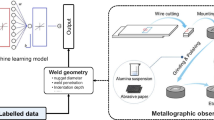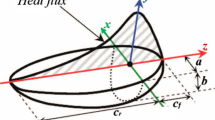Abstract
Along with introduction of the new welding software SORPAS® since 1999, numerical simulation of resistance welding has gained more and more industrial applications. It has now been applied by many leading manufacturing companies for evaluating the weldability of metal combinations and testing the welding process parameters. In the past few years, new developments have been focused on optimisation of process parameters. In this paper two new functions are presented for automated optimisation of welding current in spot welding. One function is for automated simulations in a specified range of welding current from a low limit to a high limit with a user-defined increment. The results of simulation show a curve of the evolution of the weld nugget diameter as a function of the welding current with indication of possible expulsions. The other function is for fully automated optimisation seeking for the optimised welding current for achieving an objective size of weld nugget. Further developments and improvements have also been made for simulations of projection welding and micro resistance welding especially regarding to dynamic deformation of materials and evolution of the contact interfaces. Examples of simulations are presented to demonstrate the applications of the software.
Similar content being viewed by others
References
Archer G.R.: Calculations for temperature response in spot welding, Welding Journal Research Supplement, 1960, 8, pp. 327s–330s.
Greenwood J.A.: Temperatures in spot welding, British Welding Journal, 1961, 3, pp. 316–322.
Rice W., Funk E.J.: An analytical investigation of the temperature distributions during resistance welding, Welding Journal Research Supplement, 1967, 4, pp. 175s–186s.
Nied H.A.: The finite element modeling of the resistance spot welding process, Welding Journal Research Supplement, 1984, 4, pp. 123s–132s.
Cho H.S., Cho Y.J.: A study of the thermal behavior in resistance spot welds, Welding Journal Research Supplement, 1989, 6, pp. 236s–244s.
Tsai C.L., Jammal O.A., Papritan J.C., Dickinson D.W.: Modeling of resistance spot weld nugget growth, Welding Journal Research Supplement, 1992, 2, pp. 47s–54s.
Zhang W., Kristensen T.F.: Finite element modeling of the heat development in resistance welding, The 8th Int. Conf. on the Joining of Materials, JOM-8, Helsingør, Denmark, 1997, pp. 226–233.
Zhang W., Hallberg H., Bay N.: Finite element modeling of spot welding similar and dissimilar metals, The 7th Int. Conf. on Computer Technology in Welding, San Francisco, USA, 1997, pp. 364–373.
Zhang W., Kristensen L.: Finite element modeling of resistance spot and projection welding processes, The 9th Int. Conf. on Computer Technology in Welding, Detroit, Michigan, 1999, pp. 15–23.
Kristensen L., Zhang W., Bay N.: Studies of geometric parameters in projection welding of different material combinations, 18th DVS-Sondertagung Widerstands Schweissen 2001, Duisburg, Germany, 2001, pp. 76–80.
Zhang W.: Design and implementation of software for resistance welding process simulations, SAE 2003 Transactions: Journal of Materials and Manufacturing, 2003, Vol. 112, No. 5, pp. 556–564.
Winberg L.: Optimization of weld nut projections, 3rd International Seminar on Advances in Resistance Welding, BAM, Berlin, 2004.
Dong S.J., Kelkar G.P., Zhou Y.: Electrode Sticking during micro-resistance welding of thin metal sheets, IEEE Transactions on Electronics Packing Manufacturing, 2002, Vol. 25, 4, pp. 355–361.
Author information
Authors and Affiliations
Corresponding author
Rights and permissions
About this article
Cite this article
Zhang, W. Recent Advances and Improvements in the Simulation of Resistance Welding Processes. Weld World 50, 29–37 (2006). https://doi.org/10.1007/BF03263430
Published:
Issue Date:
DOI: https://doi.org/10.1007/BF03263430




